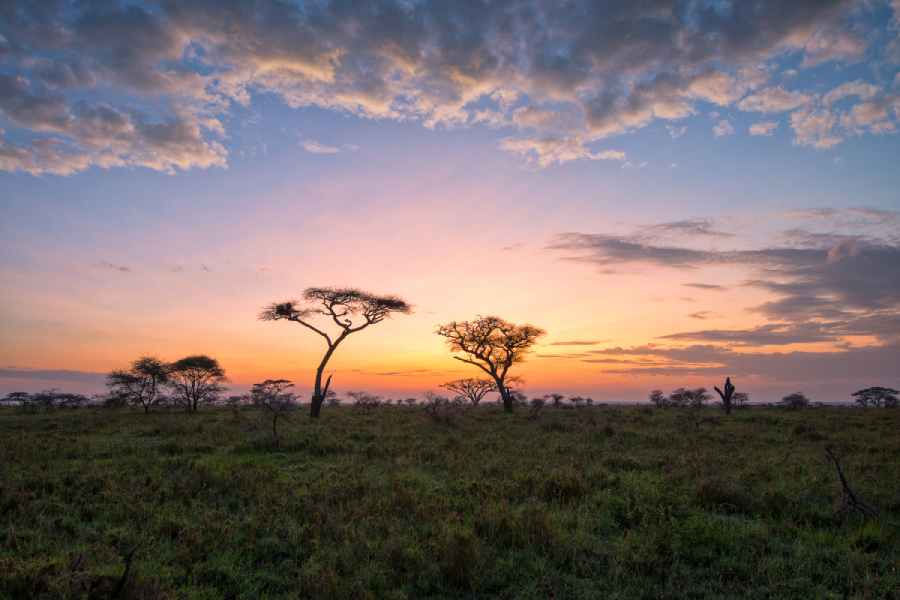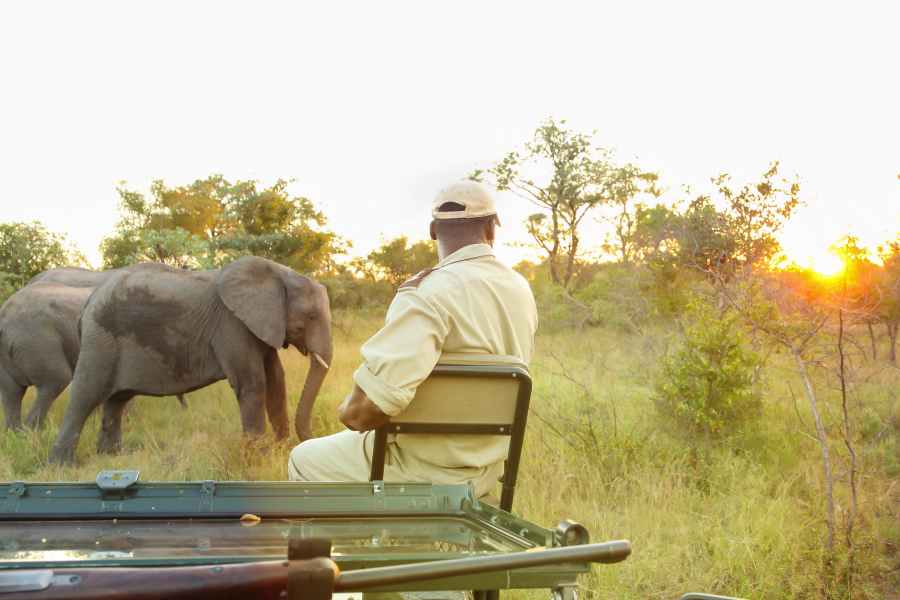Awe-Inspiring Tanzania Tour Packages
Download Travel Details >PRIVATE & SMALL GROUP TOURS TO THE WORLD'S BEST DESTINATIONS
Join Us For A Safari In Tanzania

A Tanzania Safari Adventure To Remember
Tanzania is home to a wide range of amazing safari destinations for an African safari tour. From the Serengeti National Park in the North to the Selous Game Reserve in the South, the choices are infinite! However, if this is your first time on safari, it’s a good idea to make your reservations through a travel agent and plan your trip itinerary with a reputable tour operator that offers complete Tanzania tour packages. Leaving the details to the professionals can ease your stress and make your trip more enjoyable. So, let’s get started!

When Should I Go On Safari?
One of the first things to do when planning a safari is to choose the best time of year for your trip! When is the best time for a Tanzania safari? Tanzania offers travelers a truly unique experience, with a diversity of wildlife and stunning natural landscapes, but the timing of your trip can affect the overall atmosphere of your safari. To help you plan your safari, it’s important to know that Tanzania has two distinct seasons! Keep reading to learn more about how the different seasons can influence your trip.
- The Dry Season – this season, also known as the high season, runs from June to October and is widely considered the best time for a safari in Tanzania. During the dry season, there is no rain, temperatures are comfortable, and the opportunity to see wildlife is outstanding. However, this is also peak tourist season, so planning your trip and booking your accommodations well in advance is important. The dry season is also the time of year when national parks will be the most crowded, so take that into consideration before you finalize your travel arrangements. If you don’t mind crowds, this is an incredible time to visit Tanzania. But if you would prefer to experience less crowded safari conditions, the wet season may be the best time for you to visit Tanzania.
- The Wet Season – Tanzania’s wet season falls between November and May. This season brings an abundance of rainfall and transforms the landscape into a lush paradise. While the scenery may be lovely, it does make it more difficult to spot wildlife in the thick underbrush! On the plus side, safari prices are lower and there are fewer crowds during the wet season. This means it is a good time for the budget conscious to go on safari, as well as those who want to avoid crowds!
Picking The Best Tanzania Tour Package For Your Safari Adventure
 With so much to do and see on an African safari tour, it’s hard to plan an itinerary that will give you a good overview of the country. Fortunately, most tour operators can customize an itinerary that takes into account both your budget and your interests. Another important detail to consider during the planning process is how many days you can spend on safari. The length of time you have available for the safari will greatly influence where you go on your tour.
With so much to do and see on an African safari tour, it’s hard to plan an itinerary that will give you a good overview of the country. Fortunately, most tour operators can customize an itinerary that takes into account both your budget and your interests. Another important detail to consider during the planning process is how many days you can spend on safari. The length of time you have available for the safari will greatly influence where you go on your tour.
Five days is often considered the bare minimum you should dedicate to a safari. A good tour operator can help you optimize those five days for a truly memorable experience. Here is a good example of a five-day Tanzania tour package to consider as a starting point:
Day 1 – Tarangire National Park
Tarangire National Park lies between the meadows of Masai Steppe to the southeast and the lakes of the Great Rift Valley to the north and west. This park is part of the popular Northern Safari Circuit in Tanzania but is often less crowded than Serengeti National Park. It is a good place to begin your safari with a guided game drive. The park is home to one of the country’s largest populations of elephants, as well as zebra, buffalo, and oryx – all of which flock to the Tarangire River in the center of the park in search of water. (You may also see a lion lurking around the river in search of game!) Tarangire is one of the few parks in Tanzania that allow walking safaris as well as nighttime safaris, so be sure to ask your tour operator about these options!
Day 2 – Serengeti National Park
Often referred to as “The Crown Jewel of Tanzania,” the Serengeti is home to herds of buffalo, smaller groups of elephants and giraffes, and many different varieties of antelope, including eland, topi, kongoni, and impala. Lions, cheetahs, and leopards can easily be seen within the park, too.
The Serengeti is famous for its annual wildebeest migration, in which a staggering amount of wildebeest, zebra, and gazelle trek across the park’s vast plains in search of fresh grassland. Predators follow the migration and sightings of big cats is not uncommon. Spotted hyenas and jackals trail the migrating herd, too. Many Tanzania tour packages are exclusively dedicated to following the Great Migration. If this is something you want to see, make sure your tour operator includes a stop at the Serengeti!
Day 3 – The Kopjes of Serengeti
Large outcrops of granite dot the vast savannah of the Serengeti, sticking out like rocky islands in a sea of grass. These are kopjes, and they were formed when the soft volcanic rock and ash that covers the Serengeti eroded to expose the ancient metamorphic rock below. While these outcroppings are certainly scenic, they also provide a home for many creatures. Scattered among the kopjes are hardy plants, caves for dwelling, water, and high ground that allows wildlife to keep a lookout for predators. A trip to these majestic rocks is a great addition to an Africa safari tour.
Day 4 – Ngorongoro Crater
The Ngorongoro Crater is the world’s largest intact volcanic caldera, covering 100 square miles and measuring 12 miles in diameter! This massive, bowl-like depression is often referred to as “Africa’s Garden of Eden” due to the sheer volume of wildlife that lives within its depths. The crater is home to lions, elephants, buffaloes, wildebeest, zebra, hippos, rhinos, hyenas, cheetahs, and a variety of birds. In the forests on the crater rim, away from the floor, live other animals like leopards, reedbuck, warthogs, and sometimes cheetahs and leopards. The Great Migration passes through the crater, which offers wildlife a lush and verdant place to graze and recharge before moving on. Game drives to the edge of the crater, as well as down into the crater, are very popular activities during a visit.
Day 5 – Materuni Village
Located beneath Mount Kilimanjaro, Materuni Village is home to the Chagga people. The village is near the famous Materuni Waterfall, which is easily reached after a short hike through the jungle. During the guided hike, you can learn about the culture of the Chagga people, village life, and the surrounding flora and fauna. Just remember to pack your swimsuit – the pool at the bottom of the waterfall is a great place to cool off after your hike! After returning to the village, you will learn about an important aspect of the Chagga people’s livelihood – coffee! Learn how coffee is cultivated, dried, roasted, and processed by the people of the village and help with the coffee grinding. This cultural exchange is one of the highlights of a Tanzania tour package, so don’t forget to ask your tour operator if an experience like this can be included on your trip.
A Tanzania Safari To Remember
Whether you visit during the dry or wet season, the best time for a Tanzania safari is now! As we mentioned above, there are a variety of Tanzania tour packages to fit every budget and interest, so you will be sure to find something that is just right for you. Start packing – adventure awaits!

